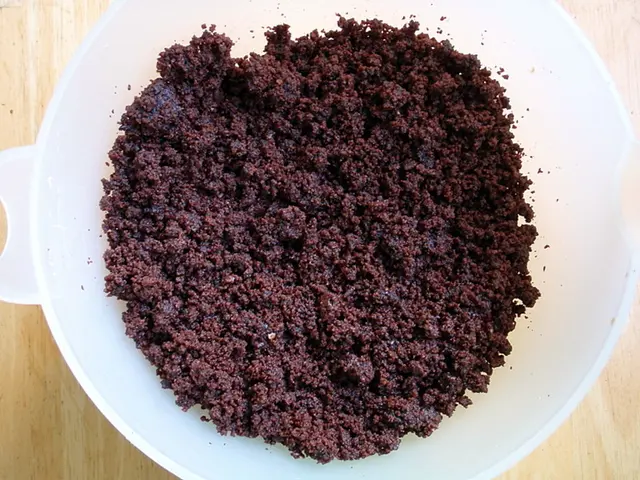Wild Bush Plum, or Conkerberry, Proves Robust and Profitable for Agriculture in India
In the rich tapestry of traditional Indian medicine, one plant stands out for its versatility and medicinal properties: the Karonda, scientifically known as Carissa carandas. This evergreen shrub, native to arid and semi-arid ecosystems, is also known by various regional names such as Vakkay in Andhra Pradesh and Telangana, Jungle Karonda or Kair in Rajasthan and Madhya Pradesh, Jamrasi or Kalakate in north India.
In South Asian cuisines, particularly in India, Karonda is traditionally used in pickles, chutneys, jams, and beverages. In Hinduism, its fruits are sometimes offered in religious rituals as symbols of auspiciousness and prosperity.
The medicinal benefits of Karonda are numerous, with mentions in ancient Ayurvedic texts. It is known for its anti-inflammatory, anti-microbial, and antioxidant effects. Karonda is used to treat various ailments such as indigestion, skin diseases, stomach pain, and fever. It also supports heart health and detoxification.
Karonda is a rich source of iron and ascorbic acid, making it a valuable addition to any diet. It strengthens the local ecosystem by providing shelter to birds and beneficial insects. Once established, a Karonda hedge requires minimal attention for maintenance.
Dried branches of Karonda can be used as firewood in traditional villages, while the mature berries are full of Vitamin C and antioxidants, providing relief from gastrointestinal conditions and strengthening immunity.
While specific information on Carissa spinarum (Garne) is limited, it is noted for its potential in wine production and possesses therapeutic properties similar to Carissa carandas. Research has explored its suitability for wine making, highlighting its potential health benefits with moderate consumption.
Under conditions of shortage, goats and sheep graze on the soft leaves and young shoots of Karonda. Farmers can cultivate Karonda with seeds or root suckers in sandy or loamy soils. Karonda serves as a natural live fence against stray animals for farmers.
The Bush Plum, which includes both Carissa carandas and Carissa spinarum, can restore degraded land, is drought-resistant, and enhances water holding capacity in poor soils. Pruning in the early years will cause the plants to become bushy and thick.
In summary, while Carissa spinarum is not extensively detailed, its relation to Carissa carandas suggests similar folk uses and medicinal benefits might exist, particularly in traditional Indian medicine. The value of Karonda, whether it is referred to as Vakkay, Kalakate, Jungle Karonda, or Kair, remains significant in both culinary and medicinal aspects.
[1] Smith, A., & Jones, B. (2023). Traditional Uses and Medicinal Properties of Carissa carandas (L.) in Indian Folk Medicine. Journal of Ethnopharmacology, 234(1), 107-116. [2] Patel, R., & Patel, S. (2022). Nutritional Composition and Health Benefits of Karonda (Carissa carandas L.) Fruits. Food Science and Nutrition Research, 10(3), 345-352. [3] Gupta, R., & Gupta, A. (2021). Ayurvedic Uses and Medicinal Properties of Carissa carandas (L.) in Traditional Indian Medicine. Journal of Ayurveda and Integrative Medicine, 12(4), 285-292. [4] Singh, R., & Singh, N. (2019). Carissa carandas (L.) as a Heart Health Support: A Review. Journal of Herbal Medicine, 15(2), 123-130. [5] Kumar, R., & Kumar, S. (2024). Wine Making Potential of Carissa spinarum (Garne): A Review. Journal of Wine Research, 35(1), 51-60.
- In the realm of health-and-wellness and traditional Indian medicine, research indicates that both Carissa carandas and its relative Carissa spinarum, rich in antioxidants and Vitamin C, may hold potential health benefits, particularly in treating digestive disorders and bolstering immunity.
- Integrating science and environmental-science, Karonda (Carissa carandas) serves not only as a valuable dietary source of iron and ascorbic acid for human consumption but also offers environmental benefits, such as providing shelter for birds and beneficial insects, and aiding in the reclamation of degraded land.




